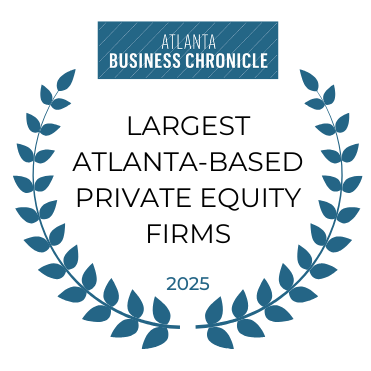Insights
NEW FEATURES BY DATE
List of Services
-
6/6/2025 How to Position Your Brand for Acquisition: A Marketing Playbook for Sellers6/6/2025
-
4/16/2025 Cultivating a Culture of Accountability and Empowerment4/16/2025
-
1/1/2025 Case Study: Preserving Legacy While Driving Growth through Minority Deals1/1/2025
-
5/20/2024 Georgia Oak Associate Job Description5/20/2024
-
3/4/2024 1851 Franchise: "Private Equity and Sports: The MVP Playbook"3/4/2024
-
9/21/2023 (Atlanta Business Chronicle) Atlanta Braves legend joins Georgia Oak Partners9/21/2023
-
4/11/2022 Can You Raise Prices in This Market? If Not, When?4/11/2022
-
12/18/2021 Putting People First12/18/2021
-
6/30/2021 Staffing Industry Insights6/30/2021
-
3/18/2021 Remote Work: A Permanent Part of Every Industry3/18/2021
-
2/4/2021 A Year of Growth: Focusing on Human Capital in 20212/4/2021
-
8/27/2020 COVID-19 Leadership with Page Siplon, CEO of TeamOne Logistics8/27/2020
-
8/27/2020 Culture Shifts During COVID-19 and Beyond8/27/2020
-
7/23/2020 Miked Up: Organizational Diversity - Volume 2, Part 17/23/2020
-
7/23/2020 Georgia & National Labor Market Trends: A Look at Six Key Industries7/23/2020
-
6/16/2020 Harnessing the Power of Technology6/16/2020
-
6/16/2020 Virtual Communication in Uncertain Times6/16/2020
-
5/27/2020 Miked Up: Volume 1, Part 15/27/2020
-
5/6/2020 Navigating the New Normal5/6/2020
-
5/6/2020 The Front Lines of Business Continuity5/6/2020
-
1/8/2020 Build Successful Teams with These 5 Elements1/8/2020
-
9/7/2018 Recruiting and Retaining Manufacturing Talent9/7/2018
-
6/5/2019 Minority vs. Majority Deals6/5/2019
-
3/1/2019 Video Case Study: Sailfish Boats3/1/2019
-
11/28/2018 What Is Your Legacy?11/28/2018
-
4/5/2018 Navigating the Sale Process: From LOI to Post-Close4/5/2018
-
10/18/2016 Selling to Your Management Team10/18/2016
-
7/25/2025 Scaling with Intention: Growth Lessons from the Front Lines7/25/2025
Harnessing the Power of Technology
DIGITAL TRANSFORMATION PLACES NIMBLE BUSINESSES AHEAD OF THE CURVE
COVID-19 has forced companies to rethink business-as-usual strategies and realize the benefits of fast-tracking digital transformation. Out of sheer necessity, technological advancements we’ve been considering for nearly a decade were kicked into high gear in an effort to remain competitive, and in some cases, simply stay afloat.
While companies that implemented digitization strategies prior to the pandemic were better positioned to maintain operations with minimal disruption, companies that are just now jumping on the digital bandwagon are reaping plenty of benefits as well, including finding themselves ahead of the competitive curve.
![]()
What is Digitization?
In Gartner’s IT Glossary, digitization is defined as the use of digital technologies to change a business model and provide new revenue and value-producing opportunities; it is the process of moving to a digital business.
However, this begs the question: what is a digital business? In essence, digital businesses use technology and digitalization processes to create new value in business models, customer experiences and the internal capabilities that support its core operations.
With technology moving from a supporting player to a leading player in innovation, we’re seeing more businesses evolve into digital businesses with a focus on the competitive advantages that technology provides. Whether it’s digitally transforming processes to reduce overhead or working to improve value to customers, businesses are relying on digitalization to remain competitive, differentiate themselves, and as a means to survive post-pandemic.
Technological Advancements Reshape Growth
New technologies are transforming the world of business in a myriad of ways. And the transformation has just begun. Successful companies are reorienting their entire business model around technology while finding clever ways to incorporate automation into business development, customer experiences, marketing, and other business processes to capitalize on and maximize the long-term value.
Manufacturing
According to the 2020 Manufacturing Industry Outlook , the coming year promises to challenge manufacturers as they attempt to regain their foothold amidst continued volatility in costs and policy decisions. However, there is growth on the horizon for manufacturers that position themselves for the year ahead with greater agility. Manufacturing leaders should increase resilience in their operations by building “digital muscle” across areas like their supply chain, mobilizing partnerships to drive business goals and leaning into corporate social responsibility.
Supply Disruption
COVID-19 has exposed the vulnerabilities of the modern supply chain. Although supply chains have been building resiliency by facing tariffs, focusing on environmental sustainability and responding to evolving consumer expectations, the pandemic still put them to the test.
With powerful lessons to be learned in the wake of the crisis, experts agree that diverse sourcing and digitization will be the key to building stronger, smarter supply chains and ensuring a lasting recovery. Another important step toward future resilience is supply chain mapping – documenting the exact source of every material, process, and shipment involved in bringing goods to market.
Organizations that had the foresight to map their supply chain prior to COVID-19 are emerging with better visibility and mobility to secure inventory at alternate sites. Yet, few companies invest the time to map their supply chain which leaves them vulnerable to future disruptions.
Smart Factories
![]()
Over the last several decades, the manufacturing industry has been characterized by seismic change and increased automation. Smart factories, specifically, are pushing those advancements even further with AI and data-driven systems and highly connected workflows.
In the United States alone, 86% of manufacturers believe that smart factories will be the main thrust of competition by 2025. Furthermore, 83% believe that smart factories will transform the way products are made. Yet, only 5% of United States manufacturers have converted at least one factory to “smart” status, which means a large percentage of companies are leaving substantial and demonstrated value on the table. It’s estimated that by 2022 factories that adopt smart factory technology will be up to seven times more productive.
Frictionless Payments
There’s no question that consumers are gravitating toward companies that provide a streamlined online experience. (Think Amazon, the iconic one-click check-out leader responsible for more than a third of all e-commerce in the United States). These frictionless transactions, aimed at reducing or eliminating red tape altogether, are the mega driver behind the $284 billion mobile eCommerce industry.
![]()
As the world reels from the effects of COVID-19, no business is exempt. However, with consumers demanding new, convenient and more efficient payment and transaction solutions, including eSignatures, eNotes and ePayment platforms such as Venmo or Zelle, businesses across nearly every industry sector hold a unique opportunity to capitalize on the booming e-commerce trend that’s expected to reach $4.9 trillion by 2021.
Digitalization, both on the home front and globally, will be the driver of innovation, productivity, and growth as we turn the corner post-pandemic. Technological transformation, making change a core initiative, placing evolving consumer expectations at the forefront of ingenuity and having the ability to modify practices in response to digital technology progress will be business’s vital armor against future crisis adversity and unpredictability.
At Georgia Oak, we’re committed to enhancing your business and helping founders grow their legacies
to their fullest potential. If you find we’re a good fit for your next step, please reach out to us.



